The Longest Swim: Benoit Lecomte Takes on the Pacific
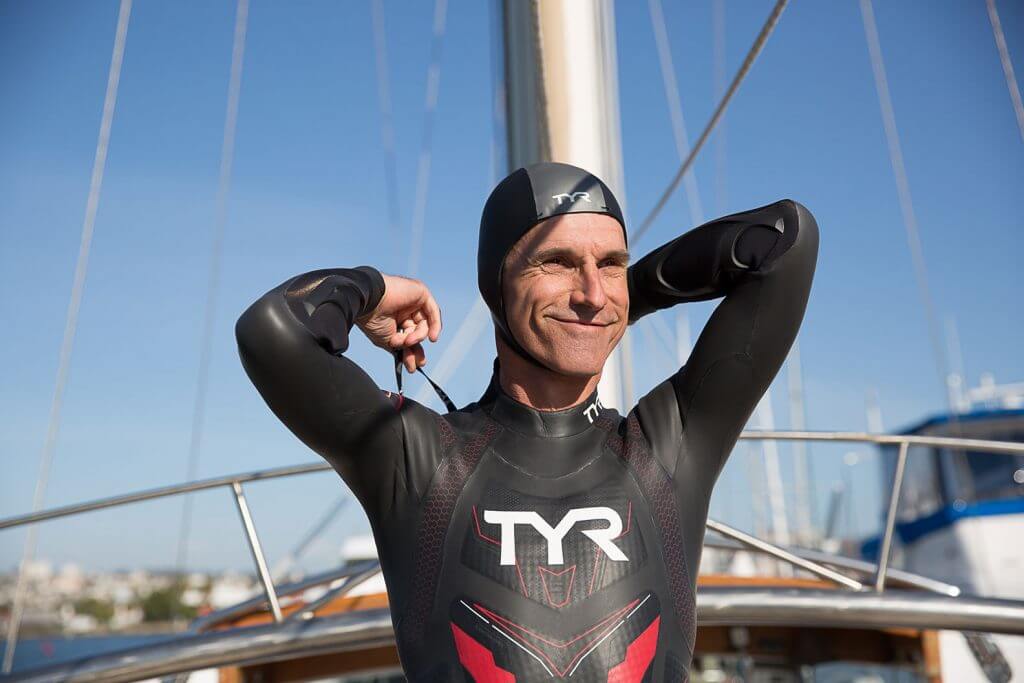
By Abigail Sheridan, Swimming World Intern.
As if Benoit Lecomte didn’t have the adventure of a lifetime while swimming across the Atlantic Ocean in 1998, he and his team set off for another expedition on June 5, 2018. This time, the French distance swimmer is aiming to cross the Pacific Ocean over the span of six months. Swimming in the name of research and sustainability, he feels it is his duty to make a difference in the environment for future generations.
His expedition serves to raise awareness of the current environmental issues at the same time as exploring, investigating, and researching these issues. Lecomte is determined once again to test his limits – this time by swimming across the Pacific Ocean.
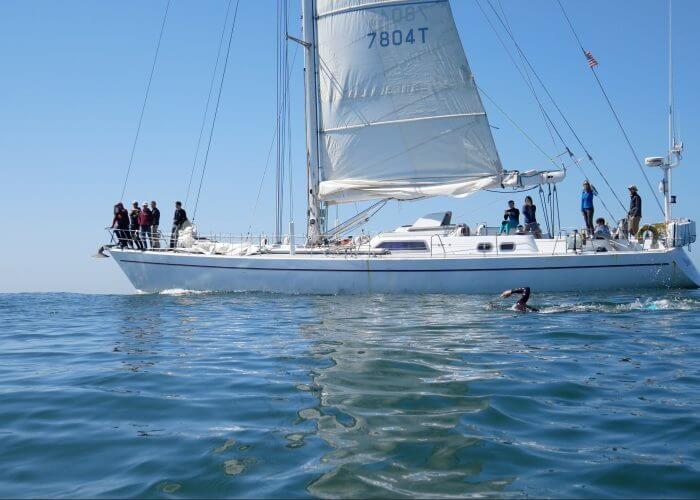
Photo Courtesy: Lea Hagemeier, The Longest Swim
Benoit Lecomte’s Daunting Task
While he might be swimming to raise awareness for climate change, the first challenge of sustainability in this quest is how Lecomte will be able to swim the 5,500 miles between the coasts of Choshi, Japan and San Francisco, United States. He hopes to average 30 miles a day for six months, utilizing the wind, currents and tidal patterns to his advantage.
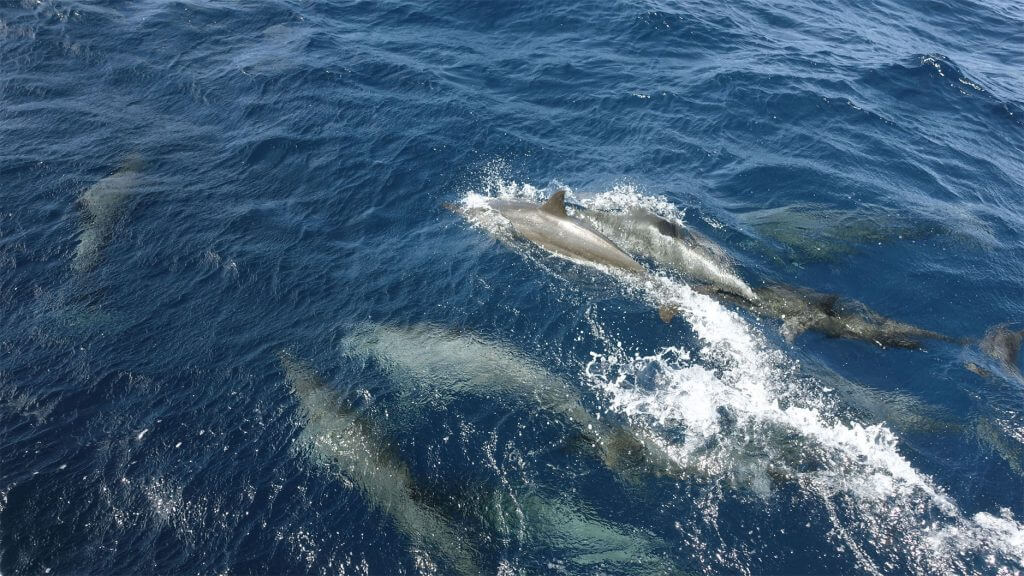
Photo Courtesy: Lea Hagemeier, The Longest Swim
As if spending eight hours a day for six months in the frigid ocean wasn’t challenging enough, their route traverses regions nicknamed the “Great Pacific Garbage Patch” – a 600,000 square-mile body of water named for its extremely high density of plastic debris – and the “White Shark Migration Area” – a path through which great white sharks migrate seeking new feeding grounds.
One might think that these sharks would be the most terrifying part of the trek, but Lecomte sees them as just a natural part of the ocean. Despite all of the threatening wildlife, his biggest concern is the inhospitable water temperature.
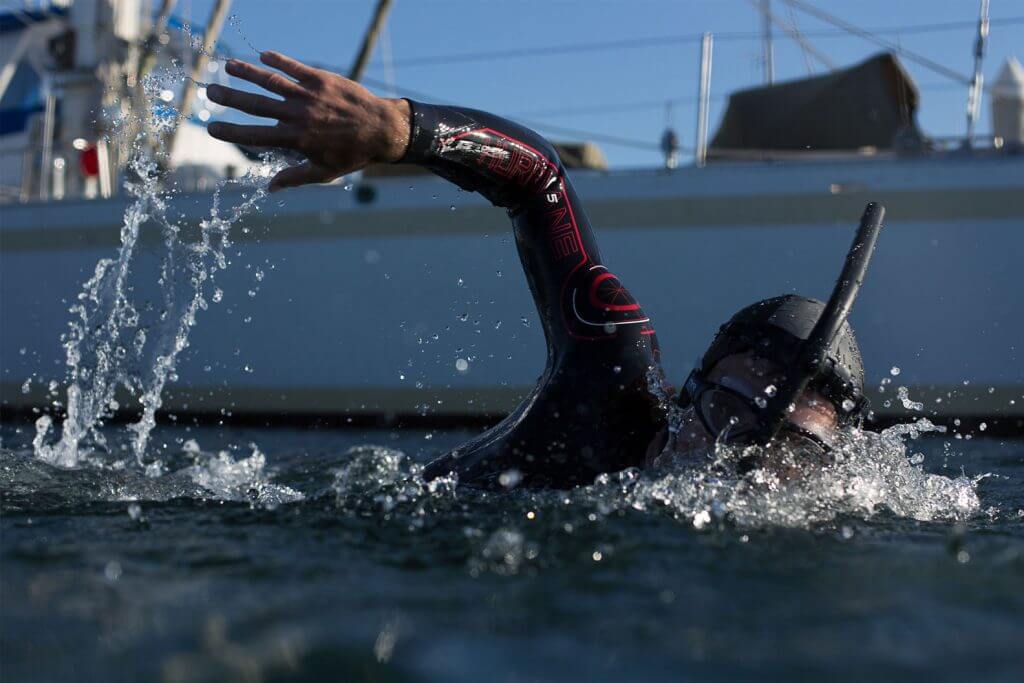
Photo Courtesy: Lea Hagemeier, The Longest Swim
Fixing His Previous Mistake – Adding Live Tracking
En route to becoming the first person to ever swim across the Pacific Ocean, Lecomte has equipped his sailboat with impressive GPS technology, allowing for “staged” swimming. This tracking method allows Lecomte to re-enter the water at the exact place he stopped to rest.
Precautions will certainly be taken to ensure the accurate tracking of this swim, as it was argued that his progress across the Atlantic in 1998 was accelerated due to overnight drifting. It took him 73 days to swim across the Atlantic Ocean 20 years ago, compared to this crossing of the Pacific that is predicted to take a minimum of 180 days. Lecomte’s progress can be viewed all at times through his live tracker.
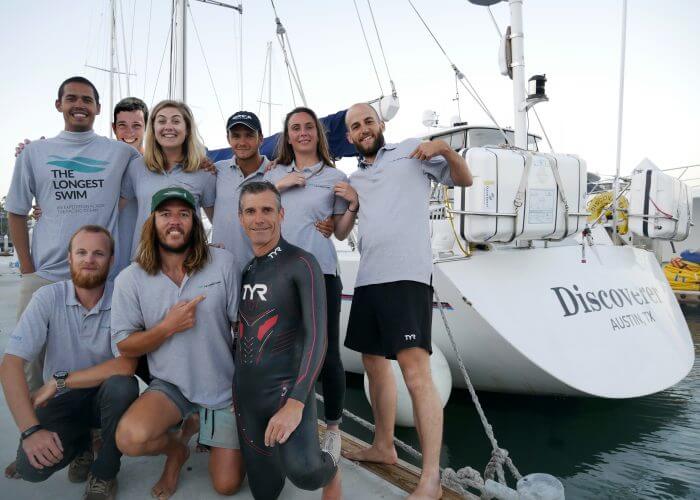
Photo Courtesy: Lea Hagemeier, The Longest Swim
The Support Crew
Lecomte has assembled a support crew to escort him the entire way across the Pacific Ocean. They call themselves The Longest Swim and maintain a website logging every aspect of their journey. The team’s 67-foot steel-hulled sailing yacht, named the Discoverer, is set to provide a versatile working environment for the team members on the continuous six-month expedition. The Discoverer is home to eight different concentrations of study supported by 13 different scientific institutions. The wide range of scientific inquiry – including space exploration, pollution, physiological experiments on the heart and radiation – will provide evidence used in studies for years to come.
The Discoverer also provides a much needed respite for Lecomte after the daily 8-hour shift of swimming through the brutally cold waters. Another integral part of the Lecomte support system is a the rigid-hulled inflatable boat, nicknamed the “UFO.” Crew members will use this vessel to keep him on the right track, provide nourishment, and give extra support depending on the conditions.
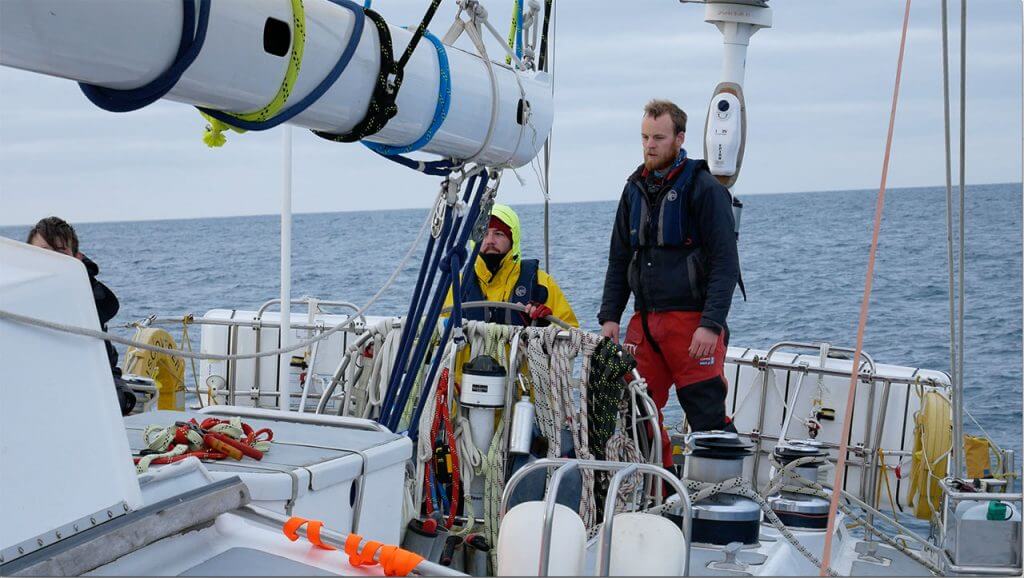
Photo Courtesy: Lea Hagemeier, The Longest Swim
What They’re Hoping to Learn
Throughout their voyage, the crew will be able to collect revolutionary data never before collected in this manner. They are also hoping to learn a great deal from the way Lecomte’s body responds to such extreme conditions throughout his swim.
They are also hoping that these studies can help them understand how the marine community contributes to global nutrient cycling, toxic chemical transport, food web interactions, plastic degradation, and the spread of organisms that may cause disease in marine life or humans as the particles migrate across the ocean.
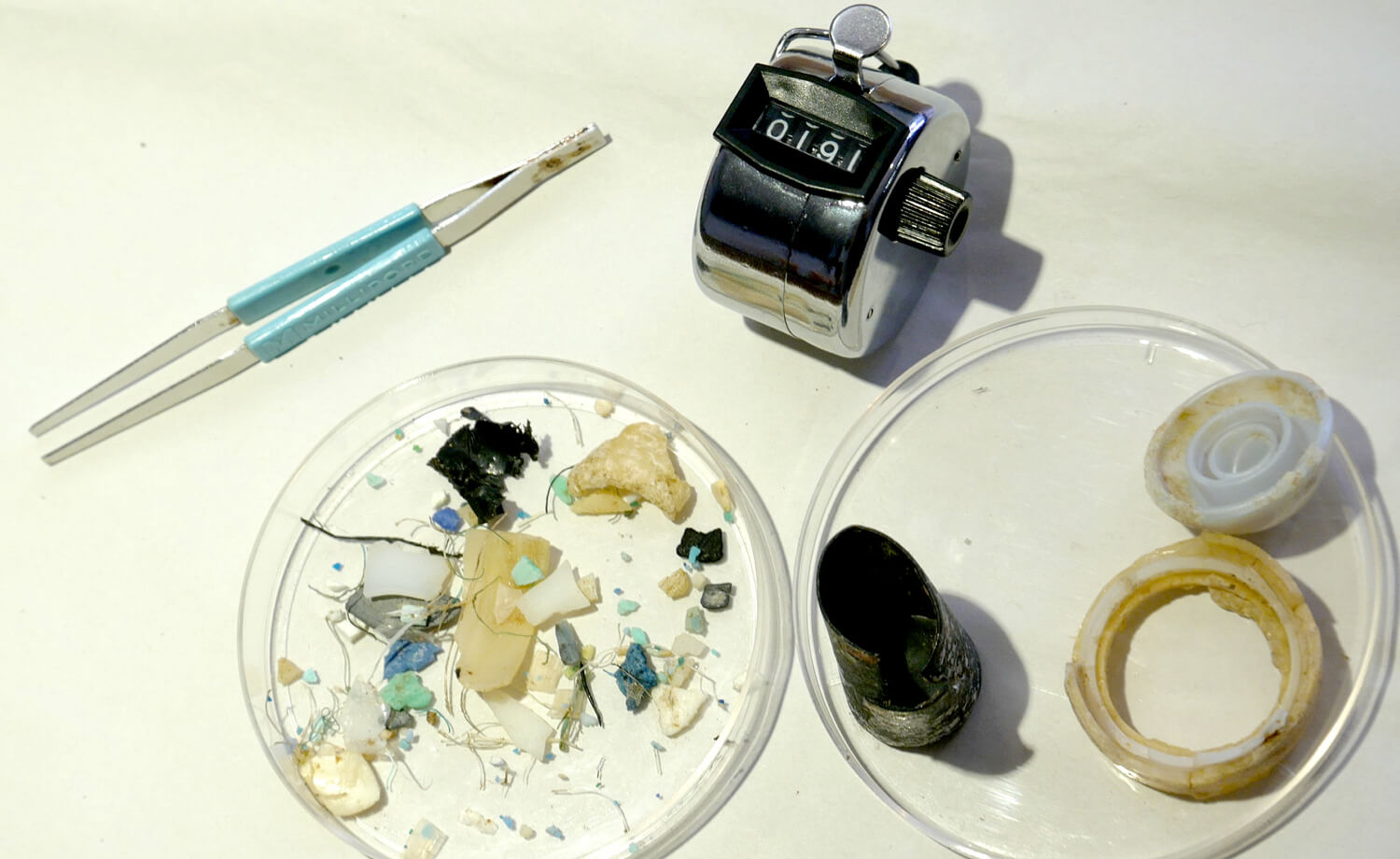
Photo Courtesy: Lea Hagemeier, The Longest Swim
Samples like this and the ones they hope to examine have never been collected nor analyzed from these locations, which would provide invaluable scientific information and assure Lecomte that he has made a difference.
How You Can Learn More
The Longest Swim maintains a website providing live tracking, Lecomte’s logbook, a plethora of information, and many unique photos.




Billy here’s an ocean swim for you